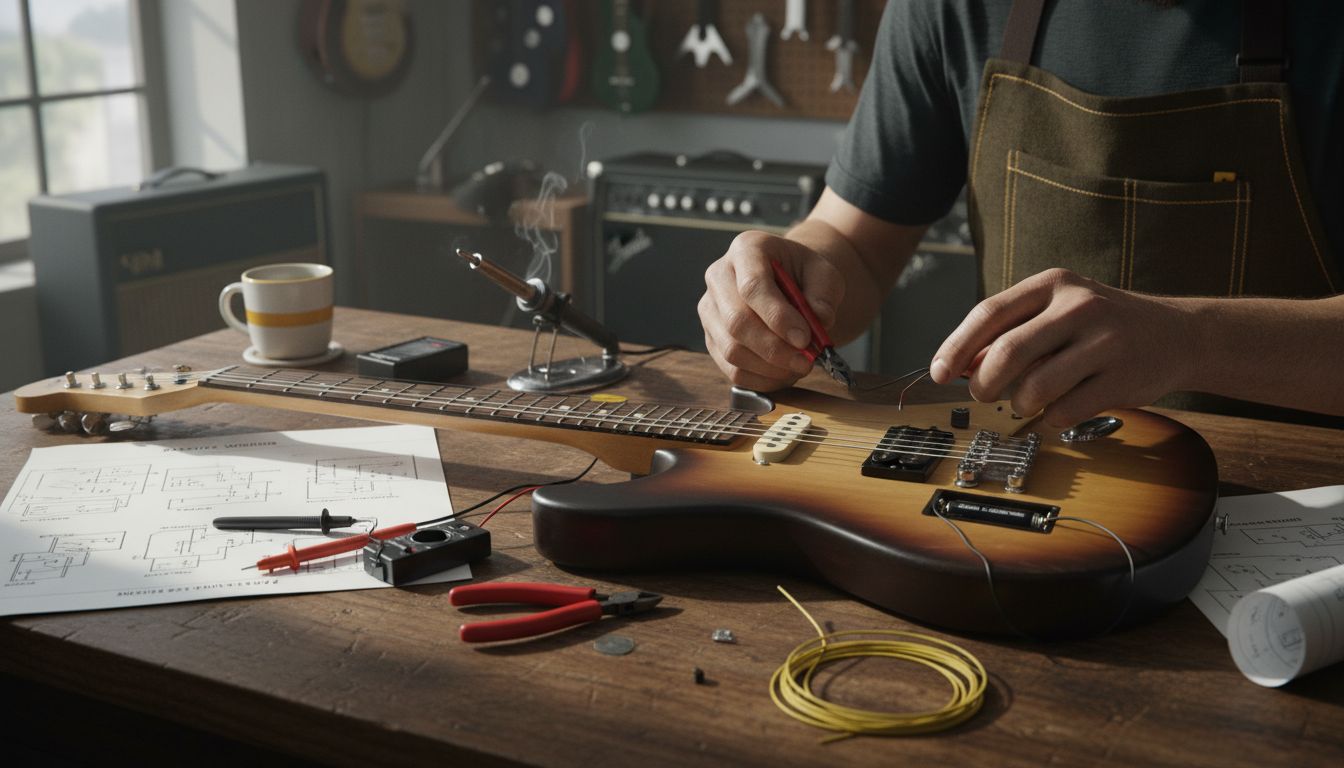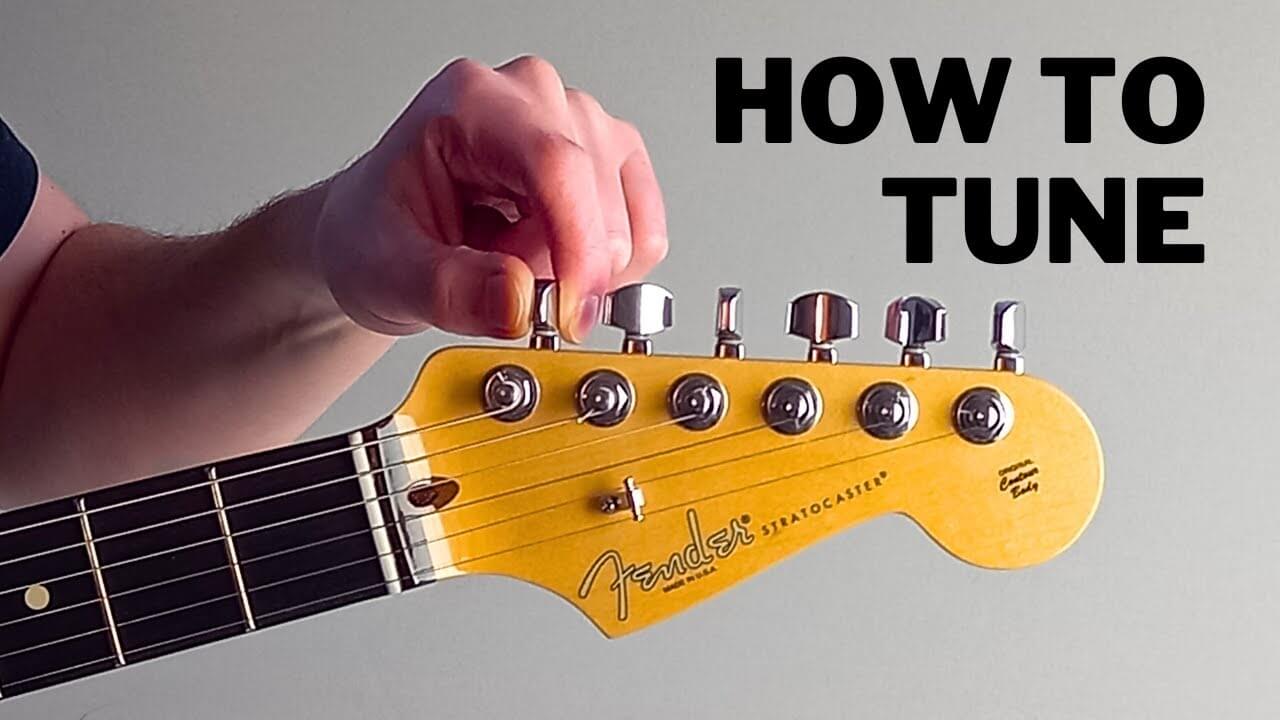Over 80 percent of a guitar’s tone comes from its pickups, yet many players are unsure which type best suits their style. Whether you crave the raw, expressive sound of classic rock or the tight, high-gain clarity loved by metal guitarists, the choice between active and passive pickups will shape every note you play. Understanding their unique designs and sonic differences is the first step to unlocking your instrument’s full potential.
Table of Contents
- Active And Passive Pickups: Core Concepts
- Types Of Pickups And Key Differences
- How Pickups Affect Guitar Tone
- Advantages And Drawbacks Of Each Type
- Choosing The Right Pickup For Your Style
Key Takeaways
| Point | Details |
|---|---|
| Pickup Types | Active pickups include a preamp for increased output and clarity, while passive pickups are traditional and rely purely on magnetic interaction. |
| Musical Style Impact | Choose active pickups for high-gain genres like metal, and passive pickups for rich, dynamic tones suited to blues and vintage rock. |
| Signal Characteristics | Active pickups offer reduced noise and consistent tonal response, while passive pickups provide organic sound and responsiveness to playing nuance. |
| Personal Preference | The choice of pickup reflects a musician’s unique sonic identity; experimenting with different configurations can enhance musical expression. |
Active And Passive Pickups: Core Concepts
At the heart of electric guitar sound are pickups - electromagnetic devices transforming string vibrations into electrical signals. These critical components come in two primary configurations: active and passive pickups, each offering distinct sonic characteristics and performance capabilities.

Passive pickups represent the traditional design, featuring magnetised poles wrapped with copper wire coils that generate electrical signal through magnetic field disruptions. These classic pickups produce a more organic, dynamic sound with natural signal compression and responsive tonal characteristics. They require no external power source, drawing energy directly from string movement. Many legendary guitar tones from rock, blues, and jazz genres emerged from passive pickup configurations.
In contrast, active pickups incorporate a preamp powered by a battery, which boosts and shapes the electrical signal before it reaches the guitar’s output. This design provides several advantages: increased output, lower noise interference, and more consistent tonal response across different playing techniques. Active pickups typically feature a more focused, tight sound with enhanced clarity and precision, making them particularly popular among metal, hard rock, and progressive musicians who require high-gain, articulate tones.
Choosing between active and passive pickups ultimately depends on your musical style, tonal preferences, and technical requirements. While passive pickups offer traditional warmth and dynamic response, active pickups deliver higher output and more controlled sound. Learn more about guitar pickups in our comprehensive electric guitar pickups guide.
Types Of Pickups And Key Differences
Guitar pickups come in several distinct types, each offering unique sonic characteristics and performance capabilities. The primary classifications include single-coil, humbucker, active, and passive pickups, with variations that cater to different musical styles and tonal preferences.
Single-coil pickups represent the earliest electromagnetic pickup design, featuring a single wire coil wrapped around magnetic poles. These pickups produce a bright, crisp sound with exceptional treble clarity, making them ideal for genres like blues, country, and vintage rock. However, they are more susceptible to electrical interference and background noise. Iconic guitar models like the Fender Stratocaster popularised single-coil pickups, defining countless legendary music tones.
Humbucker pickups emerged as a solution to the noise issues plaguing single-coil designs. By using two coils wound in opposite directions, these pickups “buck” the hum, providing a thicker, warmer tone with significantly reduced electromagnetic interference. They typically produce a higher output and are favoured in rock, hard rock, and metal genres for their powerful, rich sound. When considering pickup upgrades, understanding your musical requirements is crucial.
The distinction between active and passive pickups further diversifies pickup types. Passive pickups generate signal through magnetic interactions alone, while active pickups incorporate a battery-powered preamp to boost and shape the electrical signal. Active pickups offer increased output, lower noise, and more consistent tonal response, making them popular among high-gain music styles that demand precise, articulate sound reproduction.
How Pickups Affect Guitar Tone
Pickups are the sonic DNA of an electric guitar, fundamentally shaping the instrument’s tonal characteristics through their unique electromagnetic design. These critical components transform string vibrations into electrical signals, with each pickup type contributing distinctly to the overall sound profile and emotional expression of the music.
According to Audio Sorcerer, active pickups deliver a clear, consistent tone with higher output, making them particularly suited for genres demanding precision and extended sustain. These pickups excel in high-gain scenarios, providing musicians with a more controlled and articulate sound.
Metal, progressive rock, and contemporary jazz players often gravitate towards active pickups for their ability to maintain note definition and clarity, even during complex, high-intensity playing techniques.
In contrast, passive pickups offer a more nuanced and dynamically responsive sound. They capture the subtle variations in playing technique, delivering a warmer, more organic tone that responds intimately to the guitarist’s touch. Genres like blues, classic rock, and vintage jazz rely on the rich harmonic complexity and natural compression inherent in passive pickup designs. Understanding the right pickup for your musical style can dramatically transform your sonic palette.
The tonal differences between active and passive pickups extend beyond mere output levels. Passive pickups tend to have more pronounced mid-range frequencies, creating a fuller, more vintage-inspired sound. Active pickups, with their built-in preamp, offer a flatter frequency response and increased headroom, allowing for more consistent performance across different playing volumes and styles. Ultimately, the choice between active and passive pickups is a deeply personal decision that reflects a musician’s unique tonal preferences and artistic expression.
Advantages And Drawbacks Of Each Type
Choosing between active and passive pickups involves carefully weighing their unique strengths and limitations. Each pickup type brings distinct characteristics that can profoundly impact a guitarist’s sound, playing experience, and overall musical expression.
According to Home Studio Guys, active pickups excel in noise reduction and signal clarity, especially over long cable runs, but come with the critical caveat of battery dependence. These pickups offer several compelling advantages: consistent output, reduced electromagnetic interference, and enhanced signal purity. Musicians playing high-gain styles like metal and progressive rock often appreciate active pickups for their ability to maintain note definition and provide a more controlled, predictable sound. However, the requirement for battery power means players must always carry spare batteries and be prepared for potential mid-performance interruptions.
Passive pickups, conversely, represent the traditional approach with their own set of remarkable benefits and challenges. They generate signal through pure magnetic interaction, requiring no external power source. These pickups are renowned for their organic dynamic response, rich harmonic complexity, and ability to capture subtle playing nuances. Genres like blues, classic rock, and vintage jazz thrive on the warmth and responsiveness of passive pickups. Discover how the right pickup configuration can transform your musical palette.
Ultimately, the choice between active and passive pickups transcends technical specifications. It’s a deeply personal decision reflecting a musician’s sonic identity, playing style, and artistic vision. While active pickups offer precision and consistency, passive pickups provide emotional depth and traditional character. Professional musicians often maintain multiple guitars with different pickup configurations, allowing them to explore a broader range of tonal expressions and adapt to various musical contexts.
![]()
Choosing The Right Pickup For Your Style
Selecting the perfect pickup is a nuanced journey that goes beyond technical specifications, diving deep into the emotional landscape of musical expression. Your choice of pickup becomes an extension of your artistic voice, translating physical vibrations into sonic storytelling.
According to Bajaao, passive pickups are traditionally favoured in blues, jazz, classic rock, and vintage-inspired music, where a rich and expressive tone takes precedence. These pickups excel at capturing the subtle variations in playing dynamics, allowing musicians to communicate intricate emotional narratives through their instrument. Blues guitarists, in particular, appreciate how passive pickups respond to delicate finger movements and picking techniques, creating a sound that feels intimately connected to the player’s touch.
As recommended in our guide to selecting guitar accessories, active pickups emerge as the preferred choice for genres demanding precision and high-gain performance. Metal, progressive rock, and contemporary fusion musicians gravitate towards active pickups for their ability to maintain clarity and definition, even during complex, high-intensity playing. The built-in preamp provides consistent output, reduced noise, and enhanced signal purity, allowing technical players to articulate every nuanced note with surgical precision.
Ultimately, the decision between active and passive pickups transcends genre boundaries. Some musicians intentionally mix pickup types, creating unique hybrid configurations that challenge traditional sonic expectations. Professional guitarists often maintain multiple instruments with different pickup setups, allowing them to explore diverse tonal landscapes and adapt their sound to changing musical contexts. Your pickup choice should reflect not just your current musical style, but your artistic aspirations and willingness to experiment with sound.
Discover Your Perfect Pickup Sound with MusicStreet
Choosing between active and passive pickups can be overwhelming with so many factors to consider like tone, output, and style responsiveness. If you are seeking that ideal balance between warmth and precision or want to explore the dynamic sonic possibilities highlighted in the article, MusicStreet is here to help you navigate your options confidently. Understanding your unique sound goals is the first step to unlocking your guitar’s full potential.

Explore our carefully curated selection of premium guitars and pickups at MusicStreet.co.uk. Whether you prefer the organic feel of passive pickups or the clarity and power of active ones, our expert team in Huntingdon can advise you on the best match for your playing style and musical expression. Visit us online or in-store today to try out different pickup configurations and benefit from setup and servicing options. Start shaping your signature sound now by visiting our comprehensive guides and browsing our range. Don’t wait to experience the guitar tone you have always dreamed of.
Frequently Asked Questions
What are the main differences between active and passive pickups?
Active pickups use a battery-powered preamp to boost the signal, offering increased output and lower noise interference. Passive pickups rely solely on magnetic interactions and provide a warmer, more organic sound without needing an external power source.
Which guitar genres typically benefit from passive pickups?
Passive pickups are preferred in genres like blues, jazz, classic rock, and vintage music, where a rich, expressive tone that responds dynamically to the player’s touch is essential.
For what styles of music are active pickups most suitable?
Active pickups are ideal for high-gain genres such as metal, hard rock, and progressive music, as they provide clarity, precision, and a consistent sound, even during complex playing techniques.
Can a guitarist use a mix of active and passive pickups?
Yes, some musicians intentionally mix pickup types to create unique hybrid configurations, allowing for a broader range of tonal expressions and adaptability in various musical contexts.



Share:
How to Tune a Guitar Accurately for Perfect Pitch